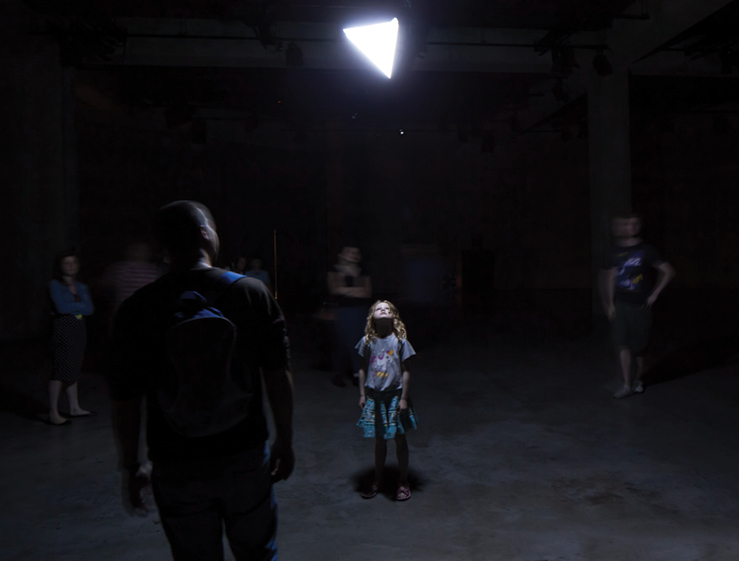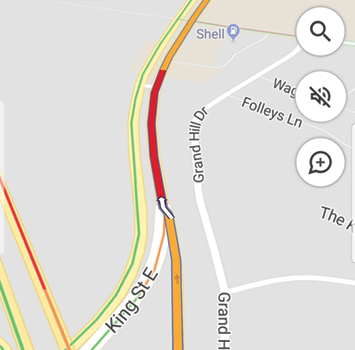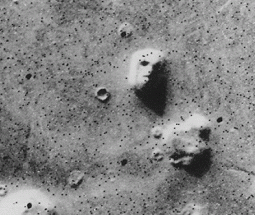123
Technical Research |Spatial Functions
122
Technical Research |Spatial Functions
This redistribution of agency presents the concept of architectural consciousness, which can result from emergence introducing unpredictability within the architectural space. It has been shown that it does not take much to infer a sense of consciousness in humans, as the human brain has been wired to see patterns and relate to them. (Fig. 2.4.1) As such, when a space becomes unpredictable, humans instinctively try to create their own patterns from what they infer from the environment. This phenomenon can be seen in the installation “Fearful Symmetry” by Ruairi Glynn, which consists of a moving light that interacts with the public using sensors.[2] (Fig. 2.4.3) Through intermediary processes between the human interactions and the movement of light, the illusion of personality is given to the object, blurring the line between the conscious humans and the unconscious objects. In Fox’s words, “as we embrace a world in which the lines between the physical and the digital are increasingly blurred, we see a maturing vision for architecture that actively participates in our lives.”[3]
If something as simple as a light can infer consciousness to the occupants, imagine the potential ramifications when these dynamic objects are connected to a network and gain the capacity to communicate with each other. Within such a space, the boundary between the occupants and the architecture break down as agency is exchanged through interaction. Not only do humans have an identity, but the objects have an identity as well. Since everything is connected, the system has the capacity to know not only where the user is but also where the object is. Because of this, the system can catalog datasets of user identity as well as object identity. It is then possible to consider the implications of a collective identity, where a database of memory can track the history of every object and user within the system. (Fig. 2.4.2)
As current infrastructures become increasingly intelligent, new considerations for identity as well as agency becomes increasingly relevant. This city of distributed intelligence then becomes the container of the identities of both human and objects alike. While not all systems will be this extreme, it is important to accommodate for this within the simulation model to maximize the variation that can be supported by the framework. A sensory based system will function differently than an identity-based system, as such it becomes important to consider these aspects when creating the overall system, as they have much impact on the space’s overall function.
This idea of a collective identity also presents an interesting proposition in replicating these results within this simulation. Having a database of history for not only the objects, but the users as well, means that the physical world begins to operate much like the virtual world, which allows a more direct approach to simulating these spaces. By utilizing these identities to track, categorize, and organize the various entities within the space, a system of interactions can be created within the simulation, which further blurs the boundary of human occupants and dynamic objects. As these dynamic architectural elements become increasingly similar to the human crowds that occupy these spaces,
2 Ruairi Glynn, “Fearful Symmetry,” accessed October 18, 2019, http://www.ruairiglynn.co.uk/portfolio/fsymmetry/.
3 Fox, Interactive Architecture: Adaptive World, 9.

The face on mars
Although simply a rock formation, bears resemblance to a human face due to our tendencies of seeing patterns within nature. This is known as Pareidolia, which is also what causes us to see shapes in the clouds.
From “Unmasking the Face on Mars,” NASA Science, accessed December 28, 2019, https://science.nasa.gov/science-news/science-at-nasa/2001/ast24may_1.

Google Maps
Google maps is one example of how collective identities within a system can influence physical spaces. It utilizes datasets of maps and users to generate real time traffic navigation overlayed ontop of updated maps. While entirely digital, it has the capacity to influence the physical flow of traffic through its distribution of digital information to the general population. This changes people’s behaviors, which in turn allows the virtual platform of information to indirectly influence various physical platforms of the city.
Google Maps Android application, screen-captured by Author.

Fearful Symmetry by Ruairi Glynn
By Ruairi Glynn, “Fearful Symmetry,” accessed October 18, 2019, http://www.ruairiglynn.co.uk/portfolio/fsymmetry/.